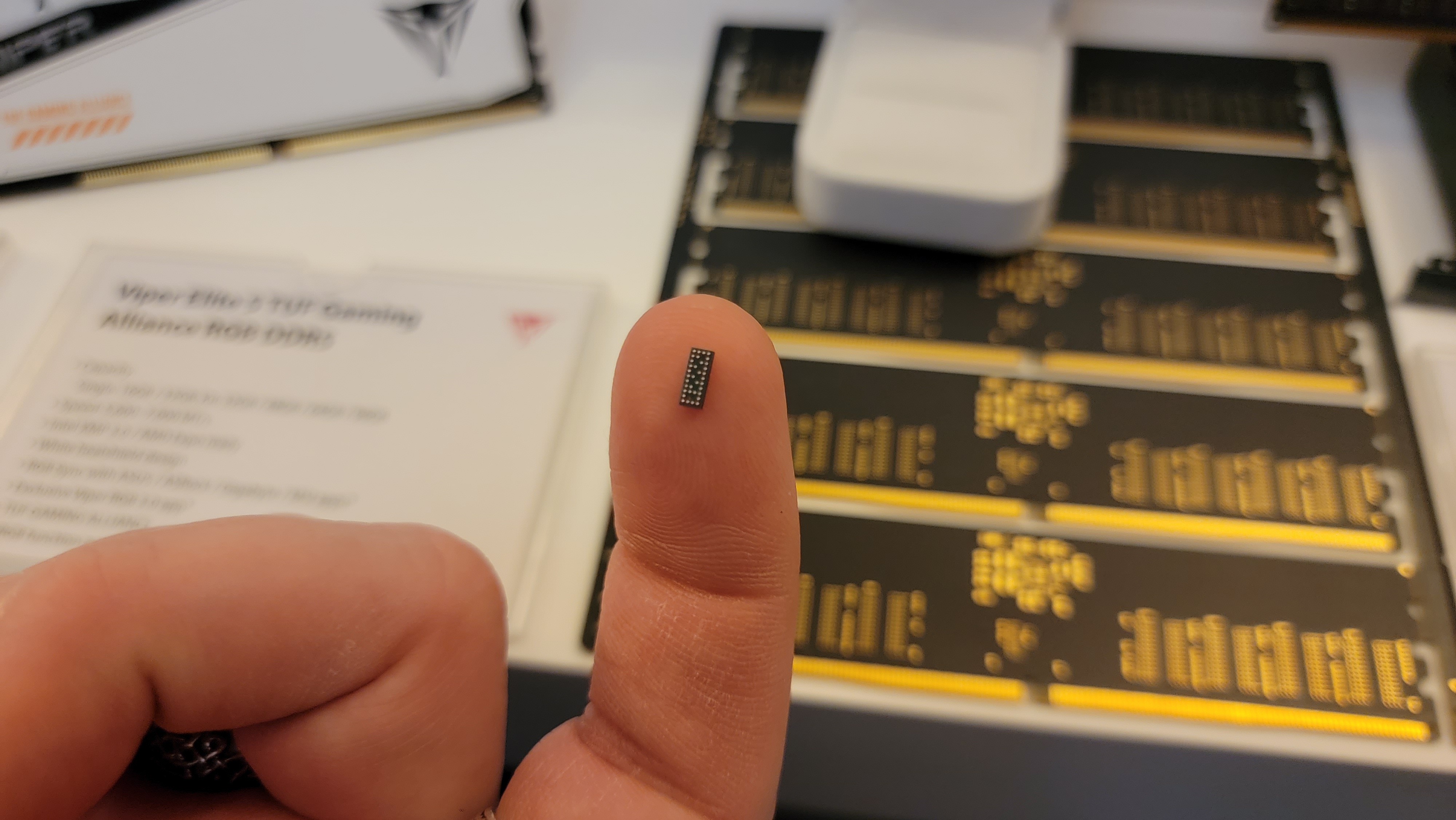Patriot has revealed an engineering preview of the company’s upcoming CKD DDR5 memory, which will compete with thebest RAMon the market. The big news is that Patriot has installed a clock driver (CKD) with theDDR5memory module to help increase the JEDEC speed to DDR5-7200 and unlock higher overclocking ceilings, too.
A clock driver is a small chip whose primary function is to serve as a buffer between the memory controller and chips on the memory module. It isn’t a novel idea, nor is Patriot the first to do it. TeamGroup did the same thing with its mainstreamElite and Elite Plus lineups. Furthermore, server-grade memory modules, like Registered DIMMs (RDIMMs), have had a similar implementation as a registering clock driver (RCD). The RCD acts like a middleman, receiving instructions from the processor before dispatching the instructions to the memory module. The downside is that the data sticks around in the RCD for one clock cycle before going on its way. However, the greater upside is that RCD significantly lessens the stress on the processor’s memory controller.

Most current DDR5 memory modules default to DDR5-4800 to align with JEDEC’s baseline to ensure maximum compatibility with AMD and Intel platforms. However, high-frequency memory kits, such as theG.Skill Trident Z5 RGB DDR5-7200 C36, are starting to arrive with DDR5-5600 as the baseline. Remember that this is the default frequency before overclocking the memory via Intel XMP 3.0 or AMD EXPO.
With a clock driver, Patriot aims to enhance the baseline speed of the brand’s future DDR5 memory kits. The company is targeting DDR5-6400; however, that’s far from the ceiling. There are many clock driver providers on the market, including Renesas, Rambus, Montage Technology, and One Semiconductor. Solutions from Renesas and Rambus scale up to DDR5-7200, whereas One Semiconductor states that its clock driver supports up to DDR5-8400. Patriot didn’t reveal which supplier the company uses for the clock drivers, though,

Future Patriot memory modules with a CKD onboard will run at DDR5-6400 right out of the box without user input. Intel’s current 14th-GenRaptor Lake Refreshprocessors and AMD’sRyzen 7000processors have native support for DDR5-5600 and DDR5-5200, respectively. However, that shouldn’t matter since the clock driver should enable Patriot’s DDR5-6400 memory to be plug-and-play on Intel and AMD chips, regardless of the integrated memory controller (IMC) quality.
Clock drivers adhere to the JEDEC DDR5CK01 standard, which defines a 1.1V threshold. Therefore, the tradeoff is that Patriot’s DDR5-6400 memory modules will likely not have the best timings in the category. For example, TeamGroup’s Elite and Elite Plus DDR5-6400 have 52-52-52-103 timings. They can’t compare to enthusiast DDR5-6400 with timings in the low and middle 30s, but then again, the CKD DDR5-6400 memory doesn’t pull 1.35V or 1.4V, either.

One of the greater benefits is that the CKD will probably improve the overclocking ceiling. With the processor’s IMC out of the picture, the chances of achieving higher overclocks are higher. TeamGroup isalready eyeing DDR5-9000with its CKD-equipped memory kits.
Get Tom’s Hardware’s best news and in-depth reviews, straight to your inbox.
DDR5 is expensive by nature because it requires more components to manufacture. Adding a power management IC (PMIC) contributed to the cost increase, so we can safely assume that Patriot’s CKD memory kits will likely cost a small premium because those clock drivers don’t come free. Sadly, Patriot didn’t provide an estimated time of arrival for the new CKD memory kits. However, its display does show that the company is ramping up the key packaging tech needed to deliver this feature in high-volume manufacturing.
Zhiye Liu is a news editor and memory reviewer at Tom’s Hardware. Although he loves everything that’s hardware, he has a soft spot for CPUs, GPUs, and RAM.